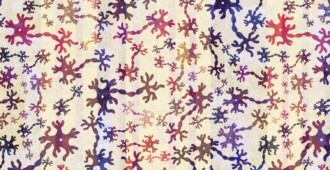We know that in the 5-10% of cases where there is a strong family history of MND, there is likely to be a genetic cause at work, acting like a weight to push the scales in favour of the disease occurring. These gene mutations are hidden somewhere within the 15 billion or so letters of DNA that make up our genome and, through collecting samples from extended families affected by the disease, coupled with huge advances in gene-hunting technology, researchers have managed to identify over two-thirds of the causes of hereditary MND in recent years and are hot on the heels of the other causes.

When there is no family history, researchers think that the disease is likely to involve a much more complex interplay of subtle genetic and environmental risk factors – each acting on their own more like a grain of sand rather than a weight – it may take a combination of many such factors that finally, after several decades, cause the scales to start tilting and the disease to appear.
As delegates heard in a session on Saturday morning, epidemiological research into peoples’ lifestyles is beginning to throw up some hints on predisposing environmental factors (read the blog here) but it will need much larger and more joined-up collaboration to really get to grips with the question.
The same can be said for genetic research, but here we are seeing the international research community already working very productively together, pooling results from their individual gene studies into so-called ‘meta- analyses’, with computers crunching huge amounts of data.
Worldwide and Genome-Wide
Dr Isabella Fogh, from King’s College London, presented the largest meta-analysis to date, from a consortium of researchers representing nine difference countries. Recently swelled by a large number of samples from the SLAGEN consortium in Italy, the project has now compared 6.1 million pieces of data from Genome Wide Association Studies performed on DNA from over 13,000 people of European descent: 6,000 with sporadic MND and 7,000 non-MND controls.

Dr Fogh confirmed previous findings from other studies that the chromosome 9 ‘C9orf72 gene expansion’ is a common risk factor in MND, particularly in the Northern European population. She also implicated a new part of the genome – a section of chromosome 17 – as a likely location of another genetic risk factor, with part of chromosome 18 also a possibility. Further detailed work needs to be done, combing these regions of DNA letter by letter, to close the net on these elusive risk genes. In the meantime, the consortium is setting its sights on extending their analysis to more than 30,000 DNA samples, to throw up even more suspects.
After you’ve finished reading the symposium articles that interest you, we’d be grateful if you could spare a few minutes to fill in our short online survey on our symposium reporting. Your comments really are useful and allow us to continually improve our symposium reportinghttps://www.surveymonkey.com/s/CPH8XF6.






Comments are closed.